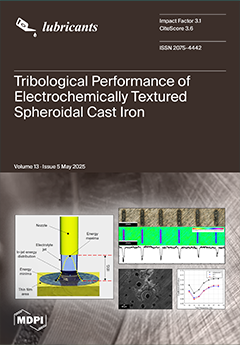In this study, laser melting experiments of Ni60/WC composite powder coatings were carried out using a laser, and the surface morphology and microstructure of the coatings were analyzed using a scanning electron microscope (SEM) coupled with energy dispersive X-ray spectroscopy (EDS). In addition,
[...] Read more.
In this study, laser melting experiments of Ni60/WC composite powder coatings were carried out using a laser, and the surface morphology and microstructure of the coatings were analyzed using a scanning electron microscope (SEM) coupled with energy dispersive X-ray spectroscopy (EDS). In addition, hardness testing equipment was used to assess the hardness of the coatings and an electrochemical workstation was used to characterize their corrosion resistance. The key findings demonstrate substantial variations in coating performance based on remelting parameters. The coatings processed without secondary laser remelting exhibited an average hardness of 501.36 (standard deviation 154.46) HV
0.2, a self-corrosion potential of −0.039 V, and a self-corrosion current density of 8.11 × 10
−4 A/cm
2. In contrast, some coatings were subjected to secondary remelting at 800 mm/min (S 800). The laser is used to scan the surface of the cladding with the laser on the surface of the cladding, and the speed is the feed rate of the laser scanning. XRD analysis revealed intensified main peaks, indicative of elevated solid solution and carbide content. SEM micrographs displayed fishbone-like and feather-like morphologies, with the hardness increasing to 622.98 (standard deviation 9.60) HV
0.2 and the corrosion metrics improving to −0.038 V and 2.86 × 10
−5 A/cm
2. In contrast, coatings remelted at 600 mm/min (S600) exhibited broader but less intense XDR peaks, alongside diminished reticulation in SEM imagery. These samples demonstrated marginally lower hardness 599.91 (standard deviation 8.35) HV
0.2 but superior corrosion resistance, with a self-corrosion potential of −0.012 V and current density of 2.64 × 10
−5 A/cm
2. The results underscore the critical influence of laser scanning velocity and remelting frequency on microstructural evolution, mechanical strength, and electrochemical stability. Enhanced hardness correlates with refined microstructural features, while enhanced corrosion resistance arises from reduced defect density and stabilized electrochemical activity.
Full article





